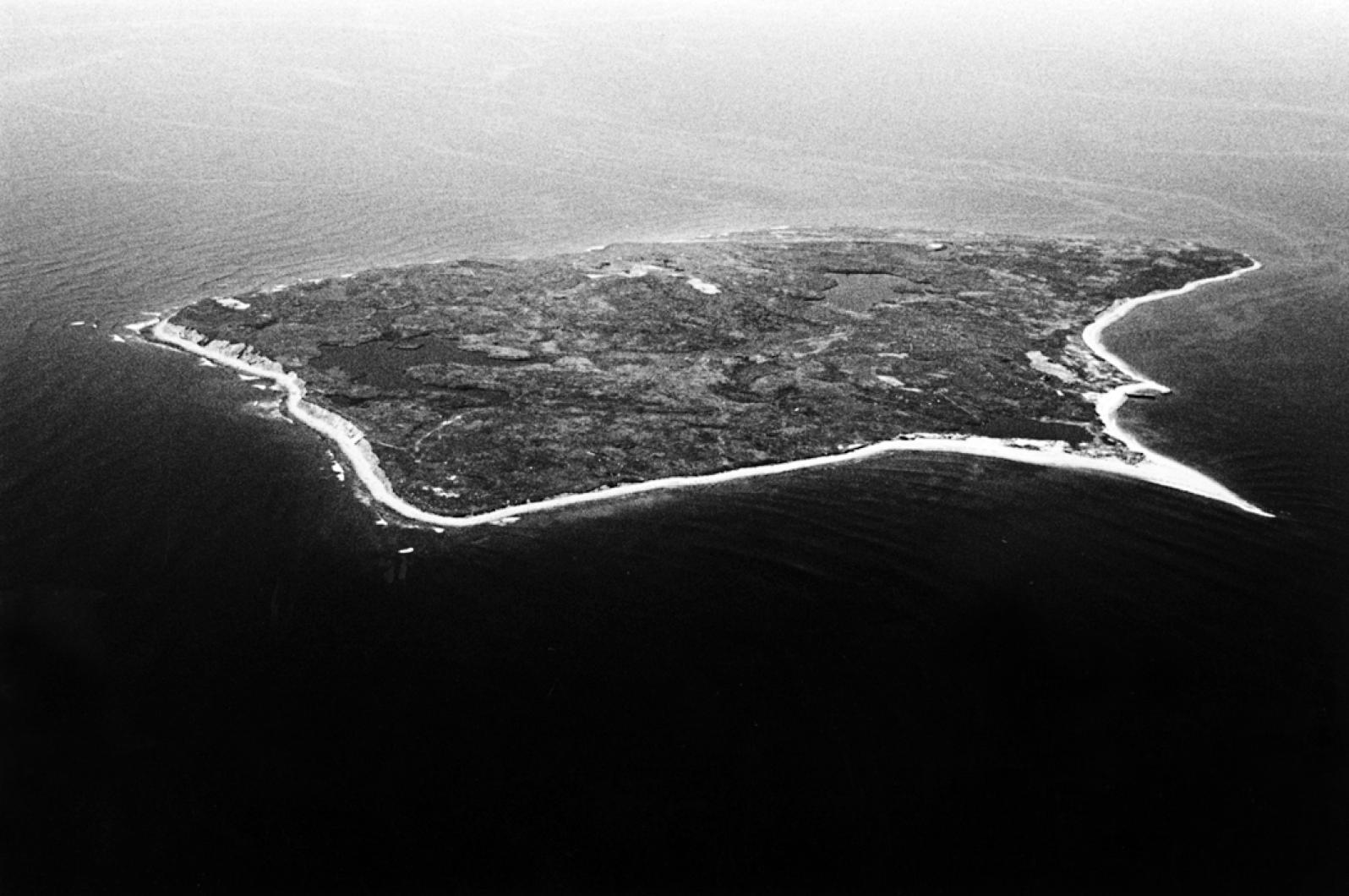It has been an unusual past 100 years for Noman’s Land, that half-forgotten rock off Chilmark and Aquinnah that has occasionally reasserted its presence to Vineyarders with wafting smoke clouds and distant bomb blasts. Shrouded in mystery and explosives, it has seen rumrunners, pirates, hurricanes, and even an accidental internecine gun battle between the Coast Guard and the Navy in 1967. But for all the human chaos that has played out on its shores it has remained, somewhat miraculously, an area of pristine natural beauty and biodiversity, almost unmatched elsewhere in southern New England. What the next 15 years holds for Noman’s will be the topic of a public meeting held by the U.S. Fish and Wildlife Service at 7 p.m. Wednesday at the Chilmark Community Center.
In 1998 all of Noman’s was handed over to the Fish and Wildlife Service from the United States Navy. Its life as a bombing range ended and its afterlife as a sleepy and deserted National Wildlife Refuge began. Since this handover 12 years ago, the Island has existed virtually undisturbed. Although occasional prescribed burns have been carried out to maintain shrubland and control invasive species, the role of the Fish and Wildlife Service on the island has been largely passive.
Required by law to produce a comprehensive conservation plan for each of its properties by 2012, the Fish and Wildlife Service will present three alternatives Wednesday night for the continued management of Noman’s. The first alternative is a business as usual, hands-off approach, while the other two alternatives represent varying degrees of land, archeological and wildlife management. All three will be subject to a period of public comment before Fish and Wildlife makes its final recommendations to the regional director for approval.
Unlike most national wildlife refuges, the island’s history as a target range and the continued presence of unexploded ordnance precludes it from welcoming the public to its shores for the forseeable future, as dictated by the terms of the Navy’s transfer agreement. This provides somewhat of a public outreach conundrum for the service, and included in their draft plans are policies that provide improved public education and access to the island, if only by more remote means such as virtual tours, and a proposed viewing area at the Aquinnah Cultural Center.
“Noman’s Land Island NWR will be a place few people can experience firsthand, yet we will provide meaningful alternatives for members of the public to experience the beauty and singularity of the refuge,” a refuge vision statement prepared by Fish and Widlife declares.
The main beneficiaries of the strategy laid out by Fish and Wildlife for the coming decades are not its far-flung human observers, though. Instead, the focus is on the island’s most important resource: its wildlife. Noman’s lies in a migratory archipelago along the eastern seaboard known rather romantically as the Atlantic Flyway. With the coastal overdevelopment of the 20th century, many species of shorebirds struggled to nest, rest and forage in their littoral domain unharried by human disturbance and scavengers such as raccoons and skunks. Noman’s, by ironic virtue of its hazardous litter, provides a crucial haven for many threatened or endangered species, such as Leach’s storm petrels, American oystercatchers and peregrine falcons, which are particularly threatened by human influence. In the strategies Fish and Wildlife lays out, government staff would step up monitoring, more actively manage habitat and remove invasive species.
The plan would also call for an investigation into introducing New England cottontails to the island, a species of rabbit that once freely gamboled the Cape and Islands, but have been largely boxed out by Eastern cottontails and habitat fragmentation.
As for the preservation of the island’s cultural relics, at its most ambitious Fish and Wildlife leaves open the possibility of working to identify the remains of those buried in the derelict 19th century Luce Cemetery, as well as allowing the Chilmark historical commission to oversee and maintain an area of the neglected graveyard. (The island is part of the town of Chilmark). More far-fetched plans for archeological work on Noman’s include the use of ground-penetrating radar and the further excavation of archeological sites, but Fish and Wildlife warns that these efforts may be constrained by resources.
A comprehensive 371-page draft of the plan is available at fws.gov/northeast/planning/nomansland/draftccp. Although freighted with bureaucratic jargon, it provides a remarkable record of the human and geological history of the island, its wildlife and the Navy’s ordnance removal program.
Noman’s is a strange place. European cemeteries lie beside Native American burial grounds, World War II-era bombs are buried alongside arrowheads, and somewhere on its seal-covered shores lies an apocryphal runestone bearing the name of Leif Eriksson. The Fish and Wildlife Service is now the custodian of these human keepsakes, but they are perfectly content in letting the rest of it go to the birds.






Comments (1)
Comments
Comment policy »